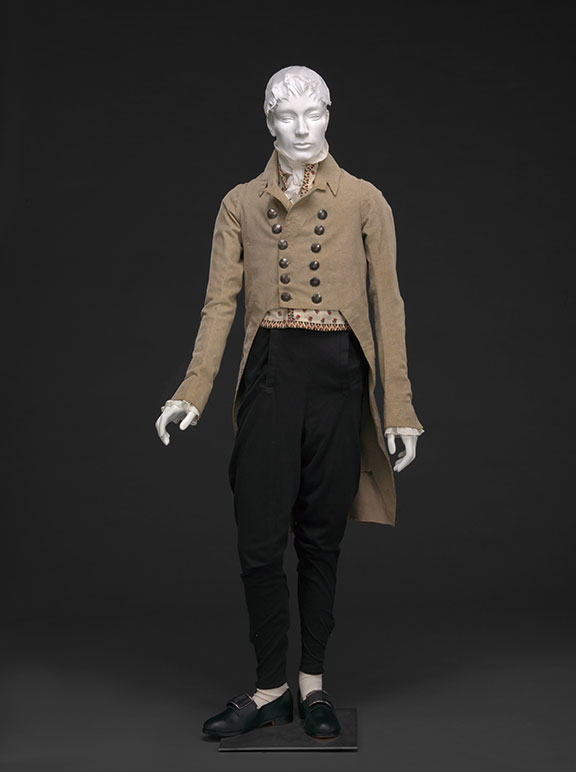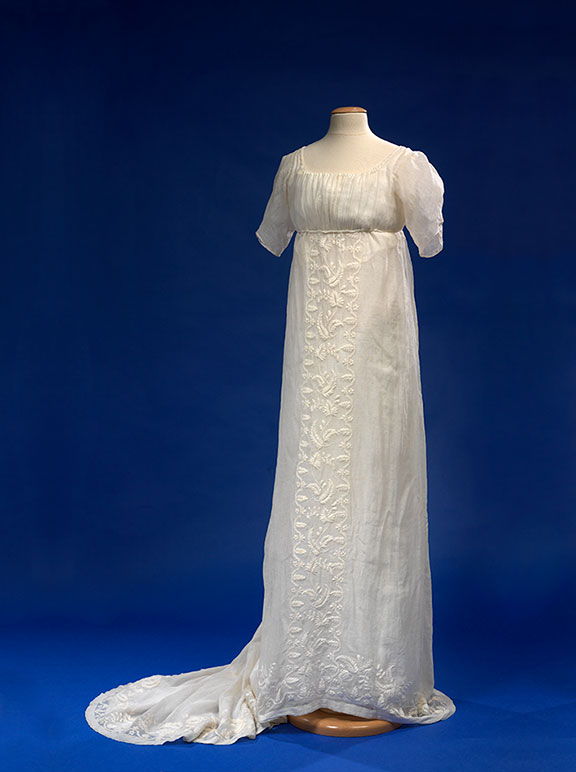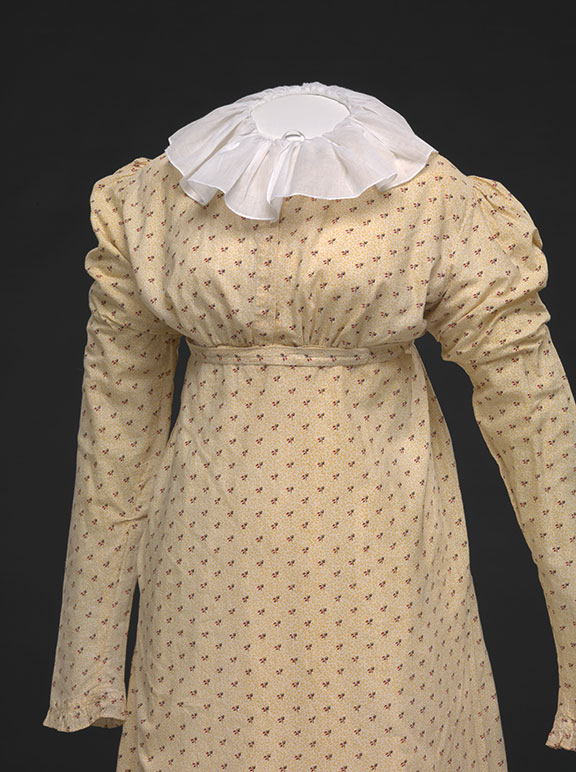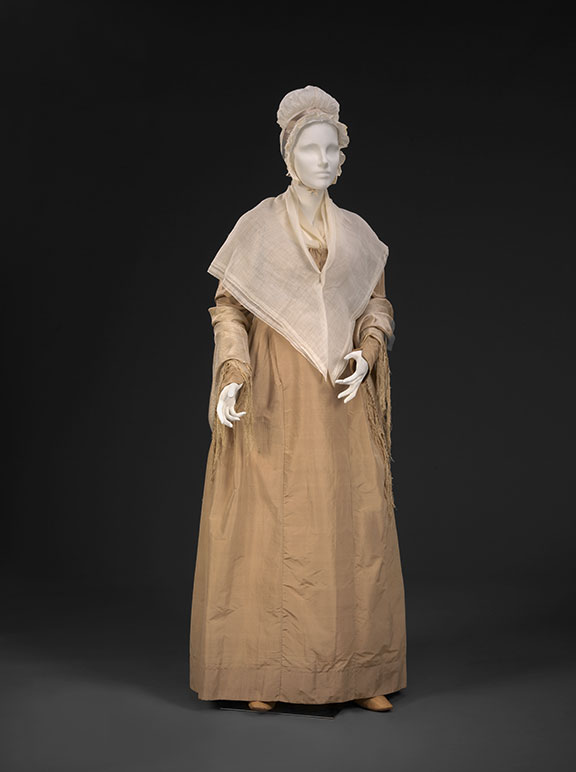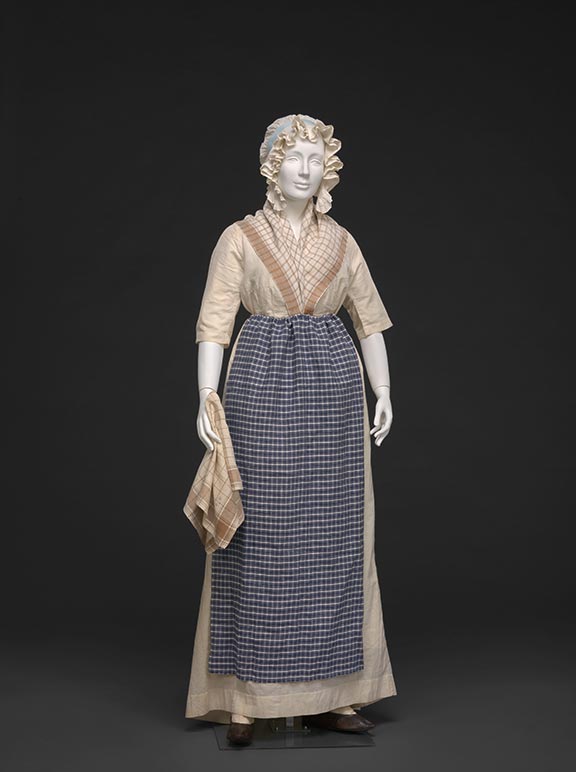“The extremes practiced in Europe do not exist in this country: our females have a delicacy and correctness of sentiment….which direct them to the proper medium.”
– New York Morning Chronicle, 1802
At the turn of the new century, the influence of ancient Greece and Rome dominated American tastes. Since our government was modeled on Greek democracy and Roman republicanism, the neoclassical style also dominated the architecture and furniture of the early 1800s—but the revealing female fashions did not inspire the same approval. While these styles shocked some in Europe, they were especially shocking to Americans. Abigail Adams, as First Lady in Philadelphia (still the Capitol in 1800), complained that fashionable Philadelphian women “wear their Cloaths too scant up on the body and too full upon the Bosom for my fancy,” and that “I wishd that more had been left to the imagination, and less to the Eye.”
Men’s clothing saw the influence of democracy in a different way: trousers, formerly worn by laborers and sailors, “trickled up” into style, a dramatic change from fashion’s usual dynamic of trickling down from the aristocracy. Trousers were ankle-length and generally somewhat loose-fitting, as befits a garment made for physical labor; their more snug counterpart, pantaloons, also came into style about this time. Both garments were initially reserved for informal wear and were first adopted by younger men on the forefront of fashion. Gradually trousers would eclipse both pantaloons and breeches in popularity.
Styles of the 1800s
Fashion-forward women sought to mimic the soft drapery of ancient statues. Waistlines were nearly at armpit level, and the slender body-hugging dresses, made of soft, clinging cotton muslin, revealed the feminine form as it had not been revealed in hundreds of years. Lowered necklines in the front and back and exposed elbows, considered ugly in earlier fashions, shocked many eyes. Quite a few Americans (like some English conservatives) deplored these revealing styles.
Surviving soft, sheer muslin dresses in the Greco-Roman style prove that some American women wore the shocking new style, whether with a minimum of underlayers to make them cling or with more substantial silk underdresses. On the other hand, most Americans modified these styles considerably. Printed cottons, heavier cottons, silks and woolens were still more common than sheer muslins.
Men’s fashions echoed women’s silhouettes, with higher waistlines and narrower silhouettes than ever before. Coats began to be more heavily tailored, usually cut away in front with tails behind. Coats’ sleeves were long and collars high. The shirt collar rose in concert with the coat, and long narrow cravats—lengths of white muslin—replaced the stock as neckwear. Working class men often wore colored shirts and checked or printed neckcloths.
Homespun Again
“The embargo has set every body to making homespun, Mama has made 157 yards since October, you will see all the children clothed in it.”
–Ann Cary Randolph to her grandfather Thomas Jefferson, March 18, 1808
Tensions between American and Europe are on the rise. In 1807, English imports became illegal. Then, in 1809, trade with both England and France—and their Caribbean colonies—were banned as well. Yet again Americans try feebly to produce fabrics at home and in our young textile factories.




